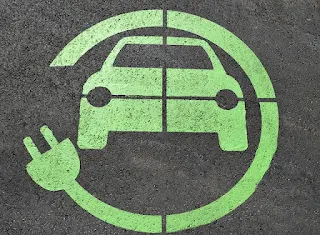In the realm of automotive innovation, two prominent contenders have emerged: electric vehicles (EVs) and petrol-powered vehicles. While both serve the purpose of transportation, their underlying technologies diverge significantly, each offering distinct advantages and challenges. Let's delve into the technological disparities between these two types of vehicles.
Electric Vehicles (EVs)
Electric vehicles operate primarily through the use of electric motors powered by rechargeable batteries. The absence of an internal combustion engine is one of the most defining features of EVs, resulting in several technological disparities compared to petrol-powered counterparts.
1. Power Source:
- EVs rely on electricity stored in batteries, which can be charged from various sources such as home charging stations, public charging stations, or renewable energy sources like solar panels.
- This dependency on electricity marks a departure from the traditional reliance on fossil fuels, offering a greener alternative with lower emissions.
2. Energy Efficiency:
- Electric motors are inherently more energy-efficient than internal combustion engines, converting a higher percentage of energy from the battery into kinetic energy to propel the vehicle.
- Regenerative braking further enhances efficiency by recapturing kinetic energy during deceleration, converting it back into electrical energy to recharge the battery.
3. Simplified Mechanical Components:
- EVs feature fewer moving parts compared to petrol-powered vehicles, resulting in reduced maintenance requirements and lower susceptibility to mechanical failures.
- The absence of complex components such as transmission systems and exhaust systems streamlines the vehicle's design and contributes to its overall reliability.
4. Silent Operation:
- Electric motors operate with minimal noise, providing a quieter driving experience compared to petrol-powered vehicles, which generate engine noise during operation.
- This characteristic enhances comfort for both passengers and bystanders and contributes to a more serene urban environment.
Petrol-Powered Vehicles
Petrol-powered vehicles, also known as internal combustion engine vehicles, have been the predominant mode of transportation for over a century. Despite recent advancements in electric vehicle technology, petrol-powered vehicles continue to exhibit technological distinctions of their own.
1. Combustion Engine:
- Petrol-powered vehicles rely on internal combustion engines fueled by gasoline or diesel, where the combustion of fuel within cylinders generates mechanical power to drive the vehicle.
- This technology has undergone significant refinement over the years, resulting in improved performance, fuel efficiency, and reduced emissions through the implementation of technologies such as turbocharging, direct injection, and variable valve timing.
2. Refueling Infrastructure:
- Petrol-powered vehicles benefit from a well-established infrastructure of petrol stations, offering convenient refueling options across a vast network of roads and highways.
- The rapid refueling capability of petrol vehicles enables extended driving ranges and eliminates concerns about battery charging times, making them suitable for long-distance travel.
3. Legacy Manufacturing Infrastructure:
- The automotive industry has long been optimized for the production of petrol-powered vehicles, with established manufacturing processes, supply chains, and expertise in combustion engine technology.
- Transitioning towards electric vehicle production requires substantial retooling and investment in new manufacturing facilities, posing challenges for traditional automakers.
4. Emission Concerns:
- Despite advancements in emission control technologies, petrol-powered vehicles continue to contribute to air pollution and greenhouse gas emissions through the combustion of fossil fuels.
- Efforts to mitigate these environmental impacts include the development of hybrid vehicles and the exploration of alternative fuels such as biofuels and synthetic fuels.
In conclusion, electric vehicles and petrol-powered vehicles represent two distinct paradigms in automotive technology, each with its own set of advantages and challenges. While electric vehicles offer the promise of sustainability, energy efficiency, and technological innovation, petrol-powered vehicles remain entrenched in established infrastructure and manufacturing capabilities. The ongoing evolution of both technologies will shape the future of transportation, influencing factors such as environmental sustainability, energy security, and consumer preferences.

